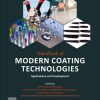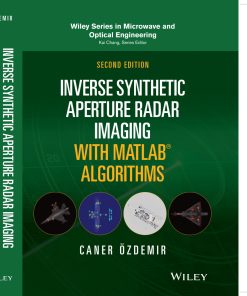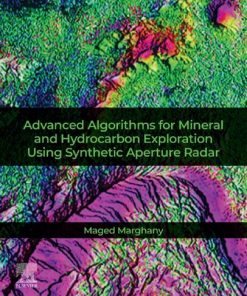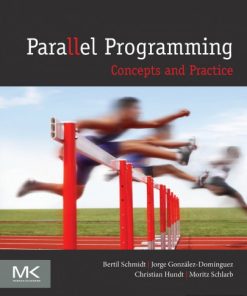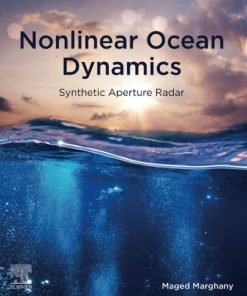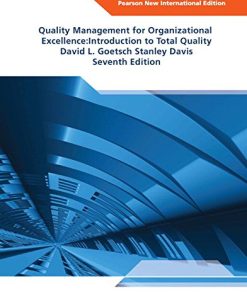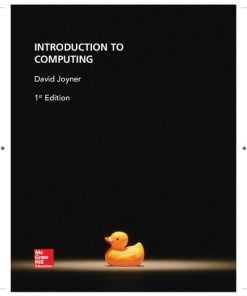Introduction to Synthetic Aperture Radar Concepts and Practice 1st edition by David Jansing 1260458978 9781260458978
$50.00 Original price was: $50.00.$25.00Current price is: $25.00.
Introduction to Synthetic Aperture Radar: Concepts and Practice 1st edition by E. David Jansing – Ebook PDF Instant Download/DeliveryISBN: 1260458978, 9781260458978
Full download Introduction to Synthetic Aperture Radar: Concepts and Practice 1st edition after payment.
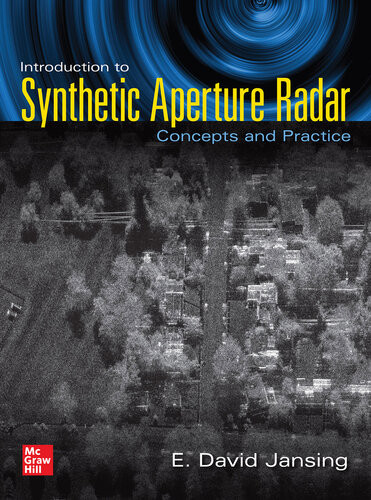
Product details:
ISBN-10 : 1260458978
ISBN-13 : 9781260458978
Author : E. David Jansing
Explore the principles and applications of synthetic aperture radar This comprehensive guide offers a solid grounding in synthetic aperture radar (SAR) fundamentals and techniques. Written by a remote sensing and signal processing expert, Introduction to Synthetic Aperture Radar: Concepts and Practice clearly explains data collection, image formation, error correction, and image quality. You will get concise descriptions of commonly used image formation algorithms, including the Range-Doppler Algorithm (RDA) and the Polar Formatting Algorithm (PFA). Continuous wave LFM systems, interferometry, polarimetry, and moving objects are discussed in detail. Coverage includes: Origins of synthetic aperture radar Ranging and imaging Image formation and image processing tools Linear frequency-modulated chirp Image formation algorithms for quadrature demodulated data Image formation algorithms for dechirped data Autofocus Image quality and speckle reduction Linear frequency-modulated continuous wave systems Remote sensing Interferometry Moving objects in SAR
Introduction to Synthetic Aperture Radar: Concepts and Practice 1st Table of contents:
1. Introduction to Synthetic Aperture Radar
1.1. Introduction
1.2. Origins of SAR
1.3. Examples of Synthetic Aperture Radar Systems
1.3.1. Magellan
1.3.2. TerraSAR-X
1.3.3. ImSAR
1.3.4. ICEYE
1.3.5. Capella Space Systems
1.4. Timing and Geometry
1.4.1. Imaging Modes
1.4.2. Geometry
1.4.3. Timing
1.5. The Synthetic Aperture
2. Ranging
2.1. Range via Echoing
2.2. The Linear Frequency-Modulated Chirp
2.3. Detecting the Received LFM Chirps
2.3.1. Quadrature Demodulation
2.3.2. Dechirping
3. Imaging
3.1. Mathematical Model
3.1.1. The Doppler Effect
3.1.2. Pulse Repetition Frequency and Doppler Chirp Rate
3.1.3. Synthetic Aperture and Exposure Time
3.1.4. Azimuth Resolution
3.2. Simulated Point Scatterers Using Quadrature Demodulation
3.3. Simulated Point Scatterers Using Dechirp
4. Image Formation
4.1. The Image Formation Chain
4.2. Motion Compensation
4.3. Processing Tools
4.3.1. Fourier Transforms
4.3.2. Interpolation
5. Image Formation Algorithms for Quadrature Demodulated Data
5.1. Range-Doppler Algorithm
5.1.1. Algorithm Overview
5.1.2. Raw Radar Data
5.1.3. Step 1: Range Compression
5.1.4. Step 2: Azimuth FFT
5.1.5. Step 3: Range Cell Migration Compensation
5.1.6. Step 4: Azimuth Compression
5.1.7. Step 5: Azimuth IFFT
5.2. Omega-K or Range Migration Algorithm
5.3. Quadrature Demodulation versus Dechirp
6. Image Formation Algorithms for Dechirped Data
6.1. Polar Formatting
6.1.1. Steps 1 and 2: Create Polar Grid and Project Polar-to-Cartesian
6.1.2. Step 3: Define Inscribed or Circumscribed Grid
6.1.3. Steps 4 and 5: Interpolate and 2D FFT
6.2. The Backprojection Algorithm
6.2.1. Computer-Aided Tomography
6.2.2. Synthetic Aperture Radar Tomographic Model
6.2.3. Reconstruction Using the Backprojection Algorithm
7. Autofocus
7.1. Sources of Phase Error
7.1.1. Phase Error within a Pulse
7.1.2. Phase Error across the Aperture
7.2. Map Drift
7.3. Phase Gradient Autofocus
7.3.1. Center Shift at Each Range Bin
7.3.2. Windowing
7.3.3. Fourier Transform to Range-Compressed Domain
7.3.4. Phase Error Estimation Using the Maximum Likelihood Estimator
7.3.5. Removal of Phase Error
8. Image Quality
8.1. Speckle
8.2. Multilook
8.2.1. Subaperturing
8.2.2. Multilook for Speckle Reduction
8.3. Other Speckle Reduction Techniques
8.4. Aperture Weighting
8.5. Image Quality Metrics
9. Linear Frequency-Modulated Continuous Wave Systems
9.1. LFMCW Systems
9.2. LFMCW Transmitter-Receiver Model
9.3. LFMCW Mathematical Model
9.4. Motion Compensation for LFMCW
10. Remote Sensing with Synthetic Aperture Radar
10.1. Polarimetry
10.2. Ocean Remote Sensing
10.2.1. Wakes
10.2.2. Ice Monitoring
10.2.3. Oil Spills
10.3. Deep Learning
11. Interferometry
11.1. The Basics
11.2. Terrain Estimation
11.3. Coherent Change Detection
11.4. Earthquakes
12. Moving Objects in Synthetic Aperture Radar
12.1. Mathematical Model
12.2. Challenges with Moving Object Estimation and Single-Channel SAR
12.3. Other Types of Moving Objects
People also search for Introduction to Synthetic Aperture Radar: Concepts and Practice 1st:
an introduction to synthetic aperture radar sar
an introduction to synthetic aperture radar sar and its applications
an introduction to synthetic aperture radar imaging
introduction to synthetic aperture radar using python and matlab pdf
introduction to synthetic aperture radar concepts and practice pdf
Tags: Introduction, Synthetic, Aperture Radar, Concepts, Practice, David Jansing
You may also like…
Engineering
Inverse Synthetic Aperture Radar Imaging With MATLAB Algorithms 2nd Edition Caner Ozdemir
Chemistry - Organic Chemistry
Organic Nanochemistry: From Fundamental Concepts to Experimental Practice 1st Edition Yuming Zhao
Computers - Computer Science
Parallel Programming: Concepts and Practice 1st Edition González-Domínguez
Earth Sciences - Oceanography
Computers - Computers - General & Miscellaneous
Politics & Philosophy - Social Sciences
Population: An Introduction to Concepts and Issues 13th Edition John R. Weeks
Business & Economics - Accounting
Accounting: An Introduction to Principles and Practice Edward Clarke


